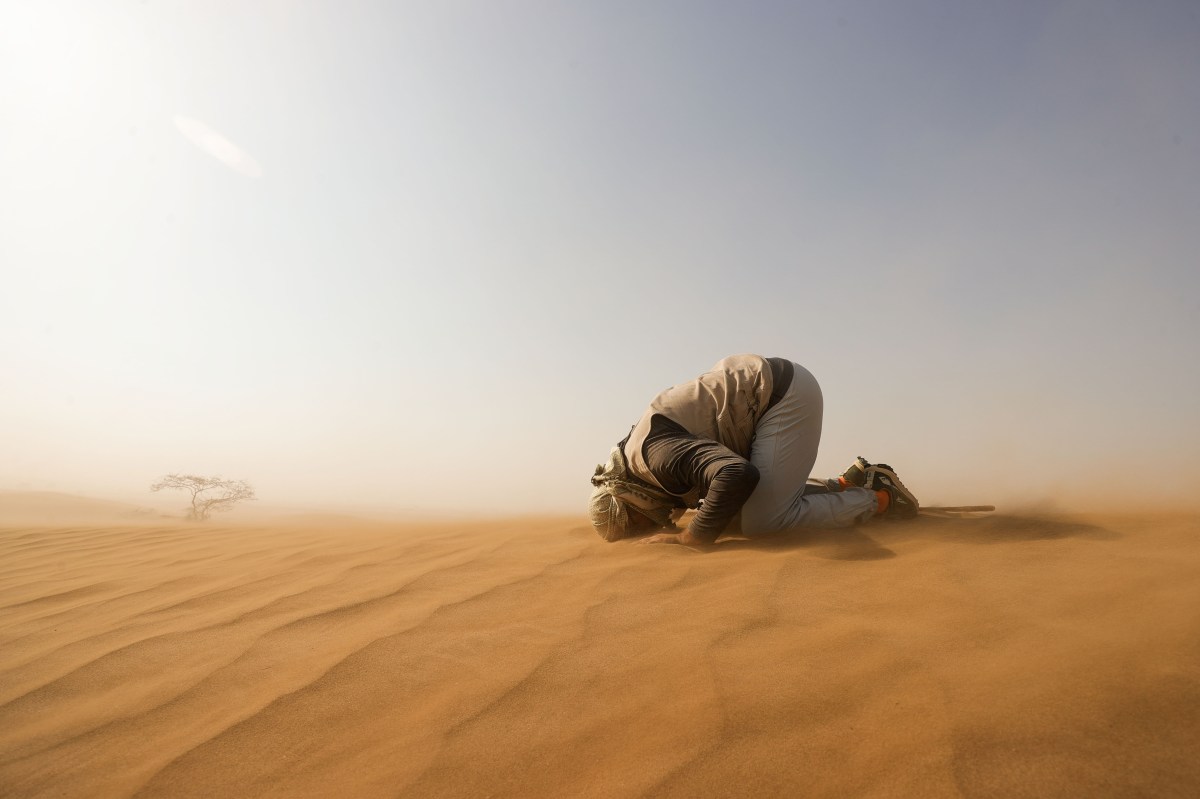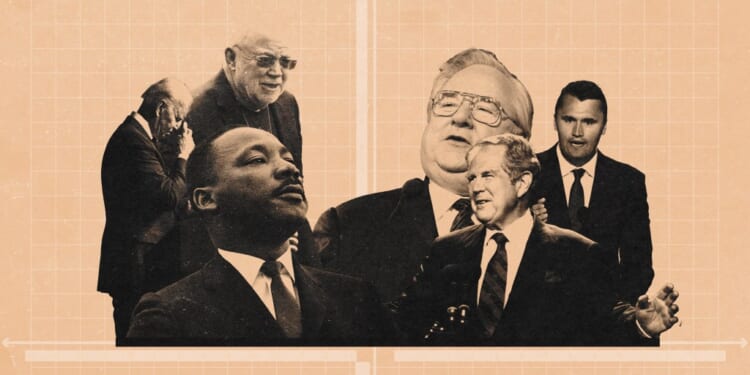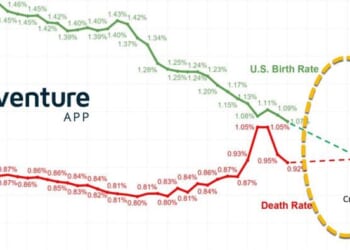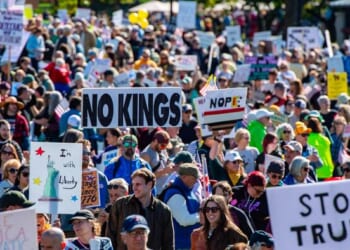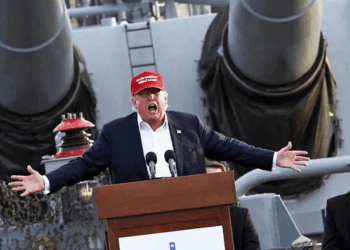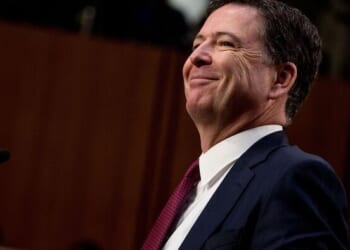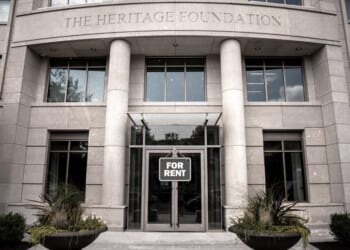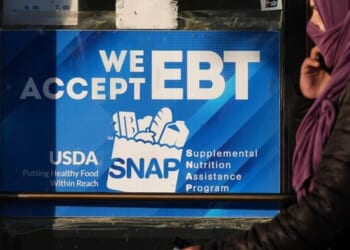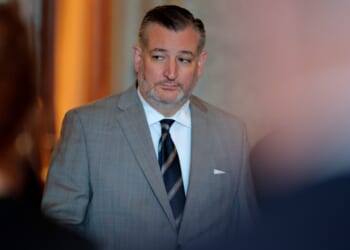You’re reading Dispatch Faith, our weekly newsletter exploring the biggest stories in religion and faith. Looking for more ways to support our work? Become a Dispatch member today.
If I asked you to name examples of individuals, organizations, or movements exemplifying the influence religious conservatives have had on our politics in the last half-century, I bet it wouldn’t take long to come up with a sizable list. But if I asked you for a similar list for religious progressives, could you? It’s arguably been since the civil rights movement that the religious left has had anywhere near the political influence of figures on the right have.
Seminary professor and United Methodist pastor Lane E. Davis thinks there are both theological reasons and more practical and political reasons, as he explains today. But the question moving forward may be whether the religious left can be about building rather than protesting.
Lane E. Davis: How the Religious Left Ceded Political Power to the Religious Right
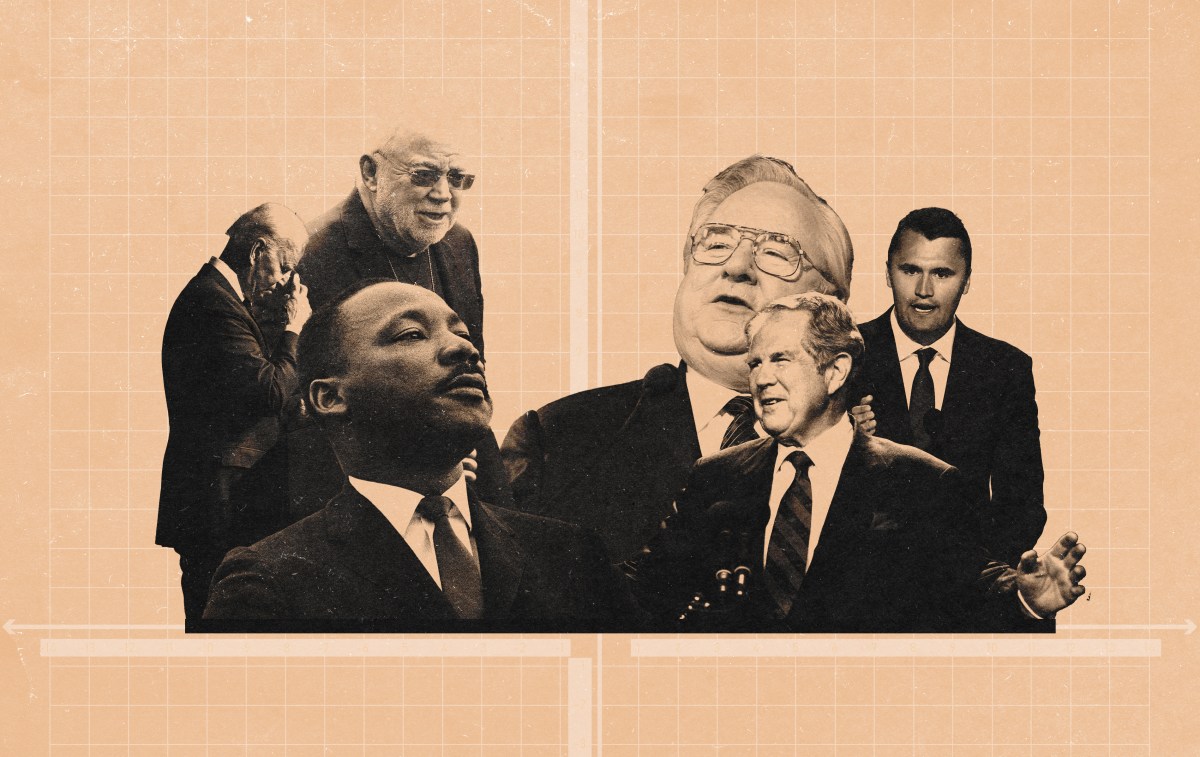
In January 2021, days after Joe Biden’s inauguration, the New York Times proclaimed: “In Biden’s Catholic Faith, an Ascendant Liberal Christianity.” The article claimed Biden might be the most religiously observant president in decades. The piece also highlighted rising Democratic stars who spoke of religion openly: Sen. Raphael Warnock, a Baptist pastor, and Catholic Rep. Alexandria Ocasio-Cortez each linked personal faith to the policies they hoped to implement. Leaders of left-leaning faith-based advocacy groups reflected optimistically that Biden’s presidency signaled a turning point for liberal Christianity.
Nearly five years later, these hopes for liberal Christian ascendency look misplaced at best and naive at worst. Religious conservatives are back in power, even if they had to sell their souls to Donald Trump—again—to get it. But a concerning fact overlooked by many progressive Christians is how little influence liberal Christianity actually wielded in Biden’s administration, or in any Democratic administration in decades.
Consider one of the Biden administration’s most important early legislative victories, the Inflation Reduction Act (IRA). The bill was a grab-bag of progressive priorities, many of which lent themselves to moral and religious arguments. Christians across the political spectrum can and do argue for climate action and affordable health insurance using biblical principles of creation care and concern for the vulnerable (one provision in the bill offered credits for houses of worship to make their buildings energy efficient). Yet the administration sold the bill to the public not as a moral imperative but as technical policy engineered for economic recovery and global competitiveness. Despite progressive Christian support, faith was irrelevant to the pitch.
Other policies supported by the religious left fared no better. The expanded child tax credit, a policy supported by liberal Catholic groups as being pro-life and pro-family, was cut from the IRA’s final language. To make matters worse, Democratic Sen. Joe Manchin, a professing Catholic, wielded the knife. The U.S. Citizenship Act, proposed by Biden on his first day in office and supported by a broad coalition of progressive faith groups, made virtually no progress. The legislation would have created pathways to citizenship for undocumented immigrants, which religious leaders championed as consistent with biblical mandates to welcome the stranger. Despite sustained advocacy, Christian groups could not shift the debate inside the Democratic Party from economics to ethics.
Stories We Think You’ll Like
Michael Wear, who directed faith outreach for President Barack Obama’s 2012 campaign, had predicted such outcomes in his 2017 book Reclaiming Hope. From inside the Obama White House, Wear watched faith commitments get acknowledged but never prioritized in messaging or policy. He came to believe that Democratic political staff were themselves simply too secular to see how faith functioned as a core marker of identity and social commitment for many Americans.
To understand how the Christian left arrived at this point, it is helpful to see how the movement compares with the Christian right in building institutional power.
The religious right began building infrastructure in the 1950s, eventually emerging in the 1970s and ’80s with a set of powerful leaders and movements such as Jerry Falwell’s Moral Majority, Phyllis Schlafly’s Eagle Forum, and James Dobson’s Focus on the Family. Over time, robust networks, both formal and informal, developed to connect churches, media, think tanks, and political campaigns.
In comparison, the religious left inherited the United States’ once powerful Protestant establishment. Protestant elites were almost always more liberal than the majority of people in the pews, but their voice carried real authority. Pastors, denominational leaders, and theologians from this group regularly appeared on the cover of Time magazine, while liberal Protestant publications like the Christian Century and Christianity and Crisis, along with denominational magazines like the Methodist Christian Advocate and The Lutheran collectively reached millions of households monthly.
Leaders in America’s Protestant establishment could once translate this cultural authority into real political power. New England Protestants nurtured the abolition movement to end slavery in the 19th century. Movements for temperance and women’s suffrage had deep connections with America’s Protestant churches in the Progressive Era. And, of course, the Civil Rights movement of the 1950s and ’60s, led by pastors and leaders of the black church, is the most visible and politically successful liberal religious movement in American history.
But after the 1960s, the Protestant establishment’s power waned as fewer Americans attended mainline Protestant churches, and the infrastructure that sustained it began to collapse. With fewer people in the pews, budgets declined, clergy lost their social influence, seminary enrollments dropped, and denominational publishing houses sold fewer books. It is not that liberal clergy stopped engaging in political and social rhetoric. It’s just that there were fewer people to hear the message.
Conservative Christians, once shut out of mainstream prestige, instead built alternative ecosystems of education and media, along with grassroots communication strategies. They mailed hand-printed newsletters to thousands of mailboxes in rural counties across the nation. Evangelical pastors broadcast sermons and Bible studies on the late-night and early-morning airwaves that radio and TV broadcasters could barely give away. Evangelical churches, many of them independent and nondenominational, opened their own publishing and distribution networks to send out books, music, and curriculum espousing conservative theology and themes. The trinkets and Thomas Kinkade paintings at Lifeway Christian Bookstores (the retail arm of the evangelical Southern Baptist Convention) might have seemed theologically kitschy to mainline Protestants, but they reinforced a conservative religious identity cultivated in churches, families, and communities. While the religious left continued, and continues, to lean on a Protestant establishment nearing total collapse, the religious right built not only institutions but markets.
These differences reflect deeper theological disagreements about power itself. This isn’t just rural versus urban or working-class versus professional—it’s about how each side reads the Bible and thinks about wielding influence.
Many religious conservatives, particularly those in the Reformed tradition, inherited a Puritan theological legacy that emphasizes God’s sovereignty, power, and glory. This theology breeds comfort with wielding power: If God is sovereign over nations, Christians should seek positions of influence to advance divine purposes. Even the megachurch pastor wrapping theology in self-help packaging is teaching congregants that God cares about outcomes, and importantly, that the faithful should pursue the levers that produce them. The line from “God is in control” to “Christians should control institutions” is short and straight.
The religious left learned different lessons from its history and theology. Influenced by the Progressive Era Social Gospel movement and, later, by liberation theology, progressive Christians came to see power structures themselves as suspect. Liberation theology, first articulated by Latin American theologians like Gustavo Gutiérrez, taught that God has a “preferential option for the poor,” which means the church’s role is to critique the powerful and amplify the powerless. These themes do echo the Hebrew prophets and Jesus’ ethical teachings. But the practical result of this emphasis was to create several generations of mainline Protestant pastors and leaders who saw themselves primarily as prophets, not institution-builders. There were exceptions: Jim Wallis founded Sojourners in the 1970s to build an evangelical left, and more recently, Rev. William Barber II’s Poor People’s Campaign has attempted to revive the religious left’s coalition-building. But without institutional support from within the Democratic Party, these movements have struggled during the Trump era to maintain momentum for lasting policy changes beyond their charismatic founders.
Liberation theology, fused with critical theory’s analysis of oppression, taught progressive Christians that power corrupts and that prophetic witness from the margins was more virtuous than wielding influence from the center. But this theological framework emerged after the Protestant establishment had already begun to collapse. Liberal Christians didn’t reject institutional power when they had it. They assumed their cultural authority would continue and thus did not build strong alternative institutions. When that establishment began to collapse in the 1980s and 90s, liberation theology provided a rationale for critiquing power rather than fighting to rebuild. The result was a movement that conflates public protest (whether at state houses or on social media) with the actual work of building durable coalitions and institutions that can shape policy over decades. (It should be noted that this pattern largely describes white progressive Christianity. Black Protestantism, by contrast, never abandoned institutional power or political organizing.)
With these ambivalent approaches to power and declining institutional infrastructure, the Christian religious left faced a critical choice—and made the wrong one. Rather than developing and adapting a prophetic critique of the policies of both political parties in a theological language that might have challenged and inspired Americans in states both red and blue, most progressive Christians aligned their goals so tightly with a progressive political platform that it became difficult to discern any difference between them.
Obama’s bailout of Wall Street and expansion of drone warfare deserved the same prophetic outcry from liberal Christians as Donald Trump’s treatment of immigrant communities and the killing of suspected drug runners in the Caribbean. But progressive Christianity largely gave Obama a pass. When it finally used its prophetic voice again during the Trump years, it sounded less like moral witness and more like partisan grievance.
The religious left’s dissolution into partisanship reached a logical conclusion in the Biden administration when progressive religious leaders could no longer articulate why religious institutions deserved distinctive treatment in America. The Equality Act of 2021 never passed, but the religious left’s support for it was telling. Several major Mainline Protestant denominations and dozens of progressive faith-based organizations endorsed the legislation that would have overridden the Religious Freedom Restoration Act, stripping away protections that shield churches, religious schools, and faith-based nonprofits from certain discrimination lawsuits.
Progressive religious leaders didn’t see this as harming their own institutions. They saw it as a necessary step toward a laudable goal of justice, particularly for the LGBTQ community. But in prioritizing an individual rights agenda over structural protections for religious institutions, they revealed they had become progressives who happen to be religious, not religious people protecting faith claims in the public sphere. They also didn’t consider what might happen when political winds shift, as they inevitably did, and a future administration could target churches preaching on race, providing sanctuary to undocumented immigrants, or advocating for Palestinian rights―practices that progressive religious institutions might need religious freedom protections to defend should the Trump administration or any other grow more aggressive. They traded the particular privileges religious communities hold in U.S. constitutional law for temporary political solidarity.
Today, the Christian religious left faces a stark choice: It can accept permanent marginalization as prophetic critics who make insiders feel righteous while exerting almost no policy influence. Or it can re-envision the work of building institutions, prioritizing personal faith commitments, and expanding outreach to conservative and evangelical Christians.
That means learning to compromise without abandoning convictions. It means supporting efforts like legal defense funds that protect religious liberty for all faith communities, even conservative ones. It means understanding how religious identity functions for liberal and conservative Americans. And it means recognizing, and truly believing, that what happens in churches every Sunday morning matters more than what happens at a ballot box or at a protest.
The religious right gained enormous power over the past 40 years, and yes, it often wielded that power in ways that betrayed the gospel it claimed to serve. But it understood something the religious left forgot: Christian witness without institutional power can quickly become nothing more than sanctified performance art. If progressive Christians want to shape American life, they should learn from the religious conservatives they oppose and build institutions that can outlast any single election cycle and speak in theological terms that resonate beyond their own tribe.
The missing prophets won’t emerge by waiting for the right politician. They’ll return when the religious left decides it can and should wield power responsibly, at least more responsibly than the religious right, and will begin the unglamorous work of building it.
More Sunday Reads
- Zohran Mamdani’s victory in New York City’s mayoral race has produced lots of news coverage of Jewish residents’ worries about Mamdani’s views on Israel and broader concerns of antisemitism in general. But for Religion News Service, Michele Chabin and Yonat Shimron report on more granular—and diverse—views on Mamdani’s win among New York’s Jewish population. “Melanie Gall, a Brooklyn resident who said she experienced antisemitism in her native Canada before moving to New York for college in 2002, said living in the city has given her a sense of belonging. ‘When I mentioned Hanukkah, I didn’t get a blank look,’ she said of living in New York. ‘Menorahs were shining in shop windows alongside the Christmas displays. I could use Yiddish words and people understand them.’ Even after the Oct. 7 Hamas massacre, when people tore down posters drawing attention to the hostages held by Hamas and scrawled antisemitic graffiti on the walls, she said she joined Jewish groups and resisted ‘a few vocal hatemongers’ taking away her sense of home. Mamdani’s victory changed things, though, she said. ‘Tonight, that sense of home is gone. The city no longer feels safe. As a queer woman, I always thought it would be the far right who would be a threat to me,’ she said. ‘But it was the left — the very community who should be supporting and protecting me as a minority — who actively campaigned for a mayor who has made it clear that Jewish safety is not his problem. I feel like I’ve lost my home.’”
- Though the Church of Jesus Christ of Latter-day Saints has established a reputation for its families having lots and lots of kids, recent data indicates that its members, too, are having fewer and fewer. For NPR, Ciara Hulet reports on attitudes within the church about the issue. “Spencer James is a Brigham Young University family life professor and a church member. He said the Allens aren’t alone; Latter-day Saints aren’t immune to the things that affect other Americans, like rising housing prices and expensive child care. But he doesn’t think smaller families will lead to an identity crisis for the faith. ‘I do think that it could lead to some questioning of, how do we reorganize society in a way that values children, that values families in better ways than we currently have.’ In addition to expenses, James said lower birth rates could also be a result of a lack of community support. ‘Right now, I think in many ways, potential parents feel like raising this child is all on me,’ he said. ‘And the community that used to exist still likes the idea of me having children, but they’re not there for me in the same way.’ That’s partly why Gregory and Anna Gabbott chose to stop with their two girls, who like to tickle each other and play with Star Wars toys at their home in Bountiful, Utah. The Gabbotts wish there had been more affordable support for them after birth; Anna had postpartum depression after their first, and both of their children had trouble sleeping as babies.”
- In another piece from Religion News Service, Ethan Housewright profiles Texas-based members of a small, obscure religious sect that ties its lineage to John the Baptist. “The two men are priests belonging to an ancient Middle Eastern sect known as the Mandaeans, one of the world’s smallest and least known religious groups. Consisting of about 60,000 members worldwide, Mandaeans are considered by scholars to be practitioners of the last surviving gnostic religion, a faith that may contain pre-Christian origins and reflects the swirling influences of Greek and Middle Eastern thought in the first century A.D. Mandaeans believe they are descendants of the disciples of John the Baptist, the ascetic preacher who baptized Jesus Christ, according to the Christian tradition, and baptism remains their faith’s central ritual. Unlike Christians, however, the Mandaean religion requires practitioners to perform baptism, called the masbuta, every Sunday, often rebaptizing the already baptized, in flowing, fresh water. The two priests had come to the edge of the San Marcos River near Texas State University, about 30 miles south of Austin, to administer the rite separately to groups of men and women. The Mandaean community in Texas is one of several that have fled religious persecution and the chaos of wars in the Middle East.”
Religion in an Image
